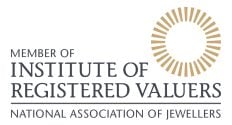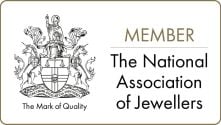History of Hallmarking:
Hallmarking is the oldest form of consumer protection and has been in existence since the end of the 12th Century. Unfortunately, names registered before the end of the 17th Century cannot be identified because a fire destroyed the London Assay Office in 1861. Below follows a summary of the main changes to hallmarking through the ages.
1300 – Hallmarking was first introduced in the UK. At this point the gold and silver standard marks were the same; depicting the Leopard’s head which is the mark of London.
1363 – Maker’s marks became required, initially in form of a rebus or initials.
1378 – Town marks are also required. Traditionally Birmingham has the anchor, Sheffield a crown, London the leopard’s head, and a three-towered castle for Edinburgh. Later additions included Dublin’s crowned harp and Chester’s three wheat sheaves. There were many other smaller offices through the years, which, like Chester have now ceased operations.
1477 – 18 Carat replaces 19.5 Carat as Standard Gold
1478 – Date letters are also required in England. Each town has its own cycle of letters and styles to indicate the year of assay. The date letters changed at different points in the year in each office until things were standardised by the Hallmarking Act of 1973 which came into force on 1st January 1975. Date letters changed in June in Dublin (until 1932 when it changed in January), July in Birmingham and Sheffield, September in Edinburgh (until 1832, and from then, in October), and May in London. For this reason, hallmarks prior to 1975 are best referred to by both part-years, the year the date started and the year it finished.
1575 – 22 Carat Replaces 18 Carat as Standard Gold
1798 – 18 carat reintroduced in addition to 22 Carat
1854 – 9, 12 & 15 Carat introduced
1932 – 15 and 12 Carat discontinued, replaced by 14 Carat.
Until 1975 there was no hallmark for platinum. The new hallmark was introduced in the Hallmarking Act 1973 as a single fineness of 950 parts per 1000. The fineness mark struck is of an orb in a pentagon.
Like most things, fashions change and so does the popularity of yellow or white metals so there have been times in history when yellow gold reigned in popularity over silver, white gold, or platinum.
In addition to the maker’s mark (or sponsor’s mark on items hallmarked from 1st January 1975) Assay office mark, Date Letter, and the Purity (or Fineness) mark, there were, from time to time, special marks struck to show duty paid (or refunded on exported items), or to commemorate special events.
Such commemorative marks seen are:
- Kings Jubilee mark 1934-35 and 1935-36
- Coronation mark 1952-53
- Queens Silver Jubilee 1977(head facing left)
- Millennium mark 2000 in a cross in the UK Assay Offices from 1st January 1999 – 31st December 2000 and in Dublin, a stylised ‘M’ incorporating a 2 for the right hand side of the letter from 1st July 1999 – 31st December 2000.
- Queens Golden Jubilee 2002 (head facing right)
- 2022 Queen’s Platinum Jubilee mark – EIIR over 70 inside an orb.
CURRENT HALLMARKING LAW
Articles made before 1920 are now exempt from hallmarking requirements.
British hallmarks now consist of two compulsory marks, as well as a registered sponsor’s mark and these are the type of metal and its fineness (depicted for gold by a rectangle with cut corners, silver by an oval, and platinum by a pentagon) and the Assay Office mark.
Optional marks since 2000 are the date letter, the crown on gold and the orb on platinum.
From July 2009 to December 2009 there was a voluntary hallmark for palladium – a member of the platinum family. The mark to distinguish palladium was, at this point the fineness of 500, 950 or 999 parts per 1000 in a trapezium. However, it was felt that over time as the mark became worn it could become confused with the platinum pentagon so the decision was made to change the mark to three circles so that all sides are curved. It is now compulsory for items being sold as palladium to be hallmarked. (Items hallmarked between July and December 2009 do not have to be re-hallmarked),
There are weight limits below which items do not need to be hallmarked. For gold this is 1g, silver 7.78g, platinum 0.5g, and palladium 1.0g.







One Response
My engagement ring was in a very sorry state of repair after nearly fifty years of continual wearing. Gerry’s undertook the repair for me and I collected it this morning. I was moved to tears when I saw this very precious item restored to it’s former glory, it was beautiful. Liz was very helpful and even cleaned my wedding ring to compliment its companion. This jeweller still holds the value of great quality workmanship and customer service and I would highly recommend them.
Thank you so much.